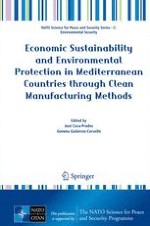This volume, with contributions from a team of multi-disciplinary team experts, addresses the economic sustainability and clean manufacturing methods to deal with the challenges that water scarcity and water quality are imposing on many countries, particularly on Mediterranean arid areas, that are threatening their economic and social development. Water plays a crucial role in industry, agriculture and daily life. Its use has increased ten-fold between 1900 and 2000. On a global scale, about 70 % of clean water from available sources is used for agricultural purposes, primarily irrigation, the rest of it being used for domestic and industrial purposes. With the actual demographic and economic trends, it is expected that by 2025, two-thirds of the world population will live in water-stressed areas and it is expected a 40 % increase in water consumption.
